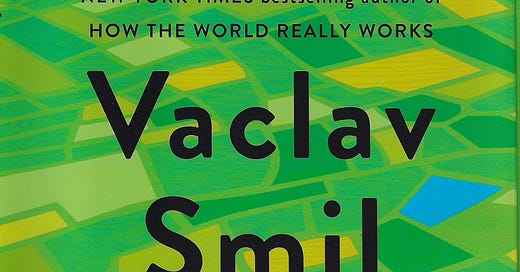How to Feed the World: The Future and History of Food by Vaclav Smil. Viking Books (2025).
The earth’s current population of over 8 billion is projected to reach nearly 10 billion by 2050. How will we feed everyone at the daunting peak? (In the 2080s, the population will start to decline, but that’s another story.) The usual view is that feeding so many people will require a big remaking of systems, which in the current state of the world seems less and less imaginable. But the 1960s population bomb didn’t go off, and Vaclav Smil’s How to Feed the World may make you feel a bit better. He’s an academic, so he provides his conclusion at the outset: “Should you be worried about the global food system? Do you live in a place that will be blighted by famine in the coming decades? Is society going to collapse? The short answer is: probably not.” The long answer is all the stimulating facts and especially numbers in the rest of the book.
Some of those numbers would suit Harper’s Index (the much-imitated magazine feature): “Just two domesticated grasses — rice and wheat — provide 35 percent of global food energy.” “Poor grain harvests in early medieval Europe meant that as much as 50 percent of the harvest had to be saved as the next year’s seed.” “Staple grains are harvested when their moisture content is between 22 and 25 percent,” or they may shatter and much of the seed be lost. Jumping to a non-essential crop, the total amount of water used to produce coffee “prorates to about 130 liters (kilograms) per cup (about 250 milliliters) made with 7 grams of roasted beans.”





